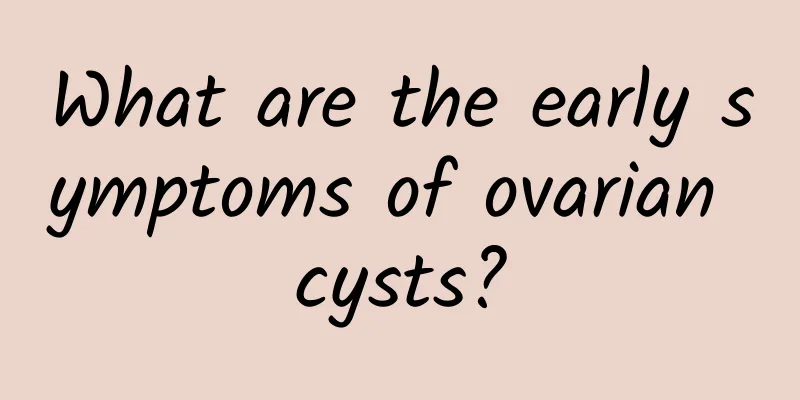Diagnosis of dysmenorrhea in Chinese and Western medicine

|
Women will have some troubles during menstruation. If they have dysmenorrhea during this period, it will become a torture. Most dysmenorrhea patients will choose to endure it silently, and rarely go to the hospital for examination, so that dysmenorrhea occurs more and more frequently and the degree continues to deepen. The following medical experts will introduce the diagnosis of dysmenorrhea in detail. Western Medical Diagnosis of Dysmenorrhea Secondary dysmenorrhea, patients with obvious organic lesions in the reproductive organs, gynecological examination, B-ultrasound imaging, laparoscopy and other technical examinations have shown that pelvic inflammatory disease, uterine tumors, endometriosis lesions cause dysmenorrhea. Diagnosis of secondary dysmenorrhea: history of repeated pelvic inflammatory disease, irregular menstrual cycle, menorrhagia, intrauterine device placement, infertility and other medical history are helpful for the diagnosis of secondary dysmenorrhea. Primary dysmenorrhea refers to the condition in which there is no obvious organic lesion in the reproductive organs after gynecological examination. It often occurs in adolescent girls or young women who have given birth 2-3 years after menarche. The diagnosis of primary dysmenorrhea is mainly to exclude the possibility of secondary dysmenorrhea. The patient's medical history should be taken in detail, and the time, type and characteristics of the pain should be noted. TCM Diagnosis of Dysmenorrhea The main symptom of dysmenorrhea is lower abdominal pain that occurs during the menstrual cycle. Therefore, when making a syndrome differentiation in traditional Chinese medicine, the first thing to do is to identify the properties of the pain, and then identify the cold, heat, deficiency and excess according to the time, nature, location and degree of the pain, combined with the period, color, amount, quality, concurrent symptoms, tongue, pulse, and the patient's physical condition. For example, if the menstrual blood volume is small, thick, and clots are present, and the pain occurs before the menstrual period, it is mostly excess; if the menstrual blood volume is small, dark red, thin, and the pain occurs after the menstrual period, it is mostly deficiency; if the pain is pulling pain, colic, burning pain, stabbing pain, and refusal to press, it is excess; if the pain is dull pain, falling pain, and likes to rub and press, it is deficiency. In addition, abdominal pain syndrome caused by diseases such as intestinal carbuncle, mass, and epigastric pain can also occur during the menstrual period or worsen during the menstrual period. Therefore, in clinical practice, detailed outpatient examination and auxiliary means are required for differentiation. |
<<: Can irregular menstruation cause back pain? What are the main symptoms?
>>: Ovarian cyst first medical record template
Recommend
How much do you know about the symptoms of adnexitis?
What are the symptoms of adnexitis? Which symptom...
Must see! Winter weight loss must-eat food ranking
The following best winter weight loss foods are c...
Expert analysis: How women can prevent bacterial vaginosis
How can women prevent bacterial vaginitis? Gyneco...
What factors can cause pelvic peritonitis?
Gynecological diseases are the most troublesome d...
What are the dangers of cervical hypertrophy that female friends should pay attention to?
Simple cervical hypertrophy will not affect a wom...
What to do if adenomyosis causes bleeding similar to menstruation after pregnancy
Is bleeding after pregnancy due to adenomyosis si...
Women aged 20 to 50 should read this! Eat like this to stay healthy
Everyone hopes that they can live to old age in g...
Why menopause is hard to cure
Menopause is a common gynecological disease. Expe...
Postoperative care after Bartholinitis
Bartholinitis is usually caused by not paying att...
Does bacterial vaginosis affect fertility?
Nowadays, many women suffer from gynecological di...
What are the methods of treating cervicitis?
Nowadays, women are under increasing pressure in ...
Does microwave treatment of cervical erosion affect fertility?
Does microwave treatment of cervical erosion affe...
Women must take good care of vaginitis in their lives
Vaginitis is a common gynecological disease that ...
What to do if you discover ovarian cysts during pregnancy? How to prevent them?
Ovarian cysts found during pregnancy should be ca...
Explore the early symptoms of ectopic pregnancy
Ectopic pregnancy is not uncommon in life. Many p...









